So we left the hotel this morning a bit after 8am and headed up to a Temple on the East side of the city named Nanzen-ji (南禅寺). The grounds at this temple are huge with many pines, maples, birds, waterfalls and in general tranquility.
The Sanmon gate was built in 1628 by Todo Takatora in memory of those who died in the Osaka Natsunojin civil war. The original gate was built in 1296 but burned down. The height is approximately 22 meters. A peculiarity of this gate is that is made only with interlocking pieces of wood, without nails.
It was 5 Yen to enter and walk up to the top of the Sanmon, so I took off my shoes and headed up. I had no idea at the steepness of the stairs I was about to traverse; more about that in a moment.
At the top of the Sanmon the view is beautiful. I’m not sure of the type of wood used to construct the gate but it looked like cypress.
KJ and I marvel at the roof lines of many of the buildings in Japan. The Samon was no exception as can be seen from this next photograph.
It is interesting to note that all of these are put in place with bamboo nails. I don’t know how long they last but it must be very effective as some roofs are only held up using them.
After enjoying the view I decided to head back down the stairs – which was considerably more daunting than the trip up and I’m glad KJ made the decision not to head up or down these stairs.
Fortunately there were both rails and ropes to utilize and keep me from falling as I headed back down the stairs. Next we took a walk along a path leading further East from the Sanmon. We came across a brick structure that at first we were not sure of its purpose. It only became clear when we took the steps up to a building and garden.
At the top of the structure we could see this was an aquaduct carrying water to who knows where but there was a large volume of water moving through the structure. At the top, we were able to enter what appeared to be another temple structure with a lovely garden.
I love the openness of the building structures. In America we seem to design to shut out the outside whereas in Japan they design the building structure to open up into the grounds surrounding the home. This seems much more natural to us and is not only inviting but very relaxing.
We should have taken a detail photo of the boards used for the porch construction as they were 24-inches wide, perfectly smooth and beautifully grained. I think they were cypress but may have been zelkova.
As we headed around back the yard opened into a small lake and waterfall.
The grounds of the temples in Japan are superb. Of course these grounds have been developed for more than 7 centuries, so I guess there is hope for our backyard if we can keep it in the family!
As we walked a small train up into the hills, there is an opportunity to look back at the building structure. As we were walking a pair of ducks (male and female) flew into the lake and calmly began to paddle looking for food and rest.
After spending a few hours walking the grounds we decided to walk around the exterior neighborhood. The next series of photos are of the various roof lines and show the variety of small statues placed on them.
Sorry for the quality of some of the roof photos as the backlight was very difficult, but we hope you can see the beauty in these structures and the design elements that are just magnificent.
We headed to our lunch spot, some 90 minutes early, but we were greeted as usual with openness and smiles. Jeff had recommended a restaurant named Okutan a famed tofu resturant outside of the temple. This was a lovely meal and you can see we were in a cheerful mood.
The meal comprised of three types of tofu, a yam soup, rice, and tempura. It was one of those meals that you will recall with fondness many years from now. There are very few restaurants that can do this so it is a joy when you do find one.
After a nice lunch we decided to head back West across town. I had asked Yoshi if he knew of any suiseki shops in Kyoto. He spoke to Koji Suzuki and he recommended Kosu-en operated by Mr. Toshio Kawai. As our cab driver dropped us off in what appeared to be a small alley we began to wonder if we were in the right place. The address was for a small flower shop. We walked in to see a few suiseki on a shelf. I was starting to feel embarrassed that I had taken everyone 20 minutes across town to what was certainly not a very good stone shop. Just as Jeff and I looked at each other with bewilderment Mr. Kawai walked in and told us to follow him. We took off our shoes and headed up a small set of stairs.
There were outstanding suiskei everywhere…and as we walked through the room it was difficult to know where to start. Mr. Kawai seemed to enjoy unusual stones of birds, trees, and other animals. I digress for a moment. I had ordered some months ago a series of books on very important collections of suiskei in Japan. One of the books had several pages of very small bronze figures hand crafted by Eisho. When I saw one of an oxen with a small child riding on top, I ask Mr. Kawai the price of this small bronze (less than 2 inches) and he indicated 150,000 Yen or roughly $1,500. Upon hearing this price I asked him if this made by Eisho and he smiled and said yes.
He has at least seven of them in the shop. Here is one of them.
The detail on this piece is just outstanding. We did acquire one of his bronzes but that will be a subject of a different post. Jeff and I saw one suiseki but I must sadly report he saw it first.
This slightly out of focus photo shot by Jeff while trying to hold the stone only just begins to show you the outstanding quality of this suiseki. KJ and I gave Jeff a good cheerful hard time all day that he bought this stone! We both loved it.
Seeing this suiseki sitting on a table the stone is moving. The kiri wood box said it was a black pine, but we could easily see this stone as a tornado or a mushroom. A quality we like in stones is that there are numerous views of the same stone. A note on this stone though was it was wrapped in a piece of newspaper dates 1978! Jeff also picked up an incredible chrysanthemum stone with two red flowers. That stone will be a subject of a future post as well.
KJ and I had already spent our budget on suiseki but were tempted to purchase another stone from this delightful shop; however, we decided to purchase one of Eisho’s small bronzes of a water buffalo and small child. Frankly, I help no hope when I first saw these bronzes that we would every see them in person much less be able to purchase one. The artistry is incredible with very fine detail on a piece that is barely 2-inches large.
I ask Mr. Kawai if he had any dobans and he nodded that he did and took off down stairs to return with a very old kiri wood box. These dobans were of incredible quality. Approximately 9 inches in length and a pair of them. Mr. Kawai indicated that they were also made by Eisho, I had no idea he made dobans, and they could be purchased for 800,000 Yen or about $8,000. Clearly these were special pieces and showed the control and undersanding Eisho had of bronze making process.
So Mary took the four pieces we wanted to purchase and began to negotiate with Mr. Kawai. If you have never seen her negotiate it is a process to behold. She obtained a price for Jeff’s two stones, and antique Chinese pot and our Eisho bronze that I simply could not believe. Thanks to Mary we were able to afford the Eisho bronze otherwise it would have been impossible.
Mr. Kawai offered to take us back to the hotel which we graciously accepted. Upon returning and putting our things away, we headed out to find a small tea shop called Ippodo. We were fortunate to be waited on by a young woman with impeccable hospitality. She ask us if we would like to sample some tea and then proceeded to show us a sitting area across from a stove and table. She presented about 30 small bottles of tea for us to smell. We selected five teas and she happily made four samples of all five teas for us to taste. Now mind you so far we had only purchased $10 in tea bags from her.
She spent 30 minutes educating us on each tea we selected, why it tasted the way that it did, how to brew it and how to store it. I only wish employees in America, and managers as well, could experience the joy in which she went about her job. It was as if it wasn’t a job but pure joy in being able to share the experience of tea with us. Regardless if this was just to get us to purchase tea or not it was one of the more memorable memories that I will take from this trip – to take joy in everything we do and to share that joy with others.
It was a truly enjoyable day and one that KJ and I will remember many years for now. Well it is after 7am on Saturday now and I can’t wait to see what we discover today…

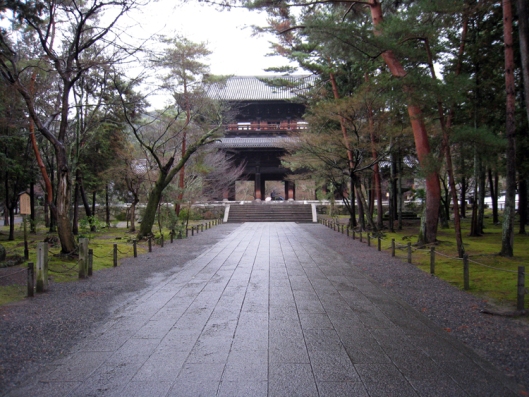
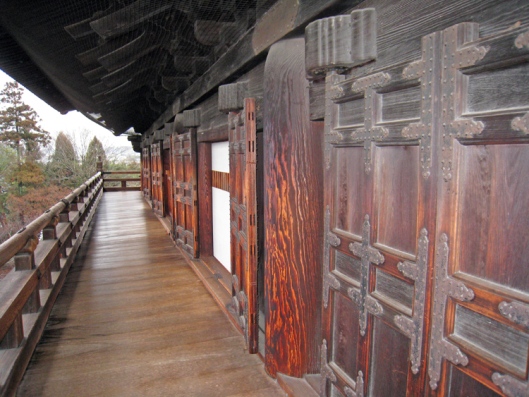
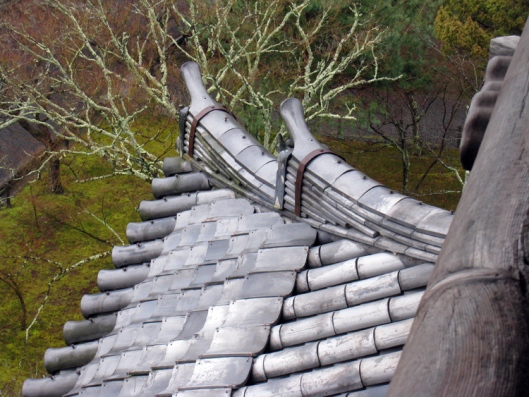
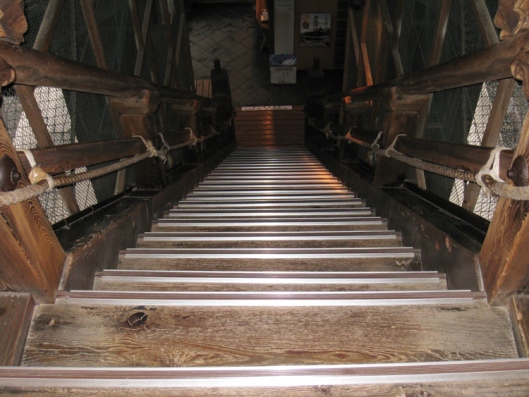
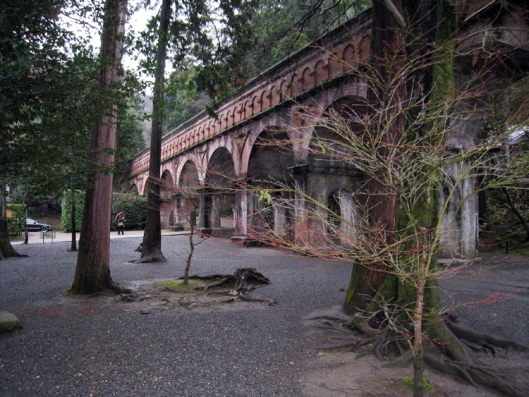

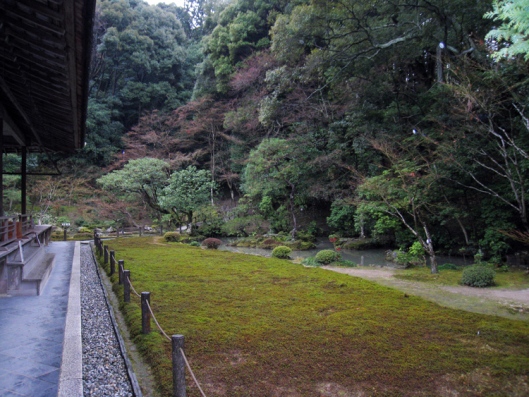
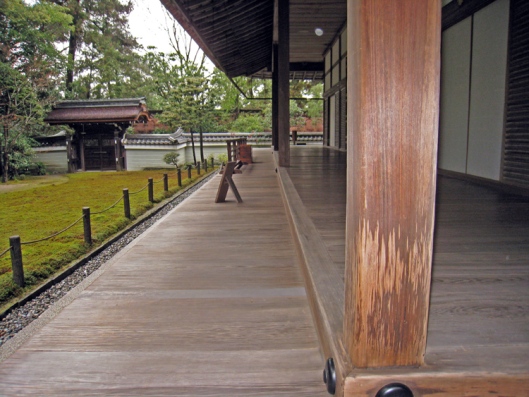
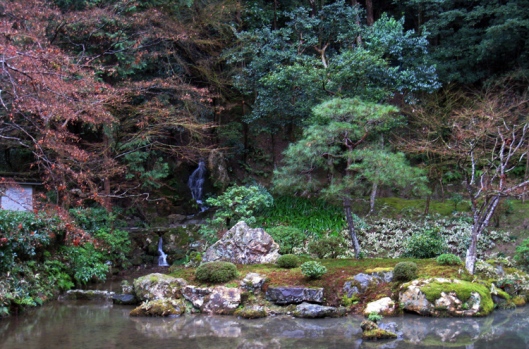
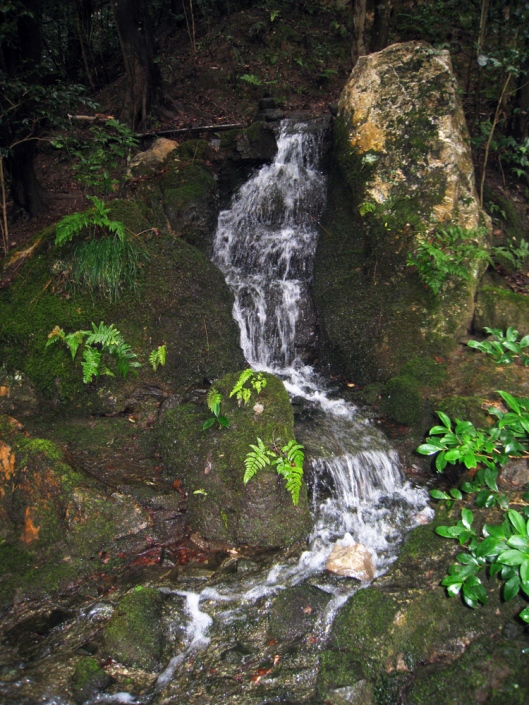
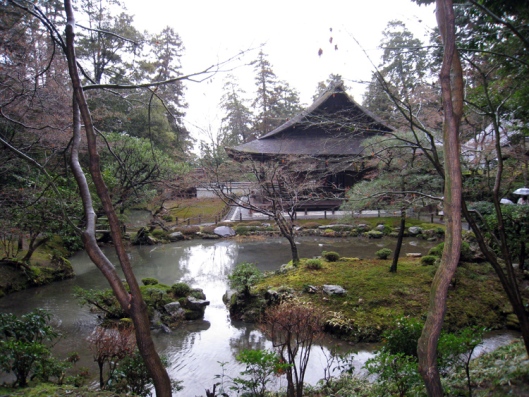
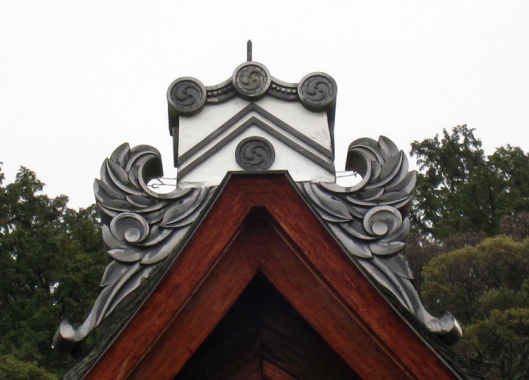
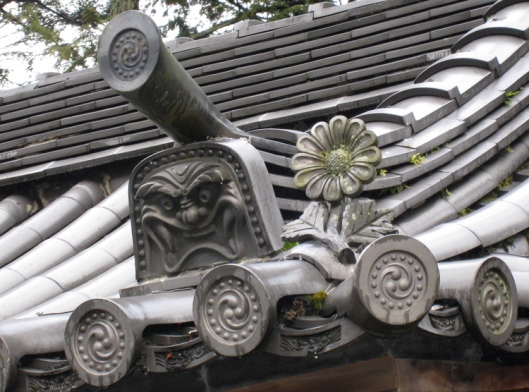
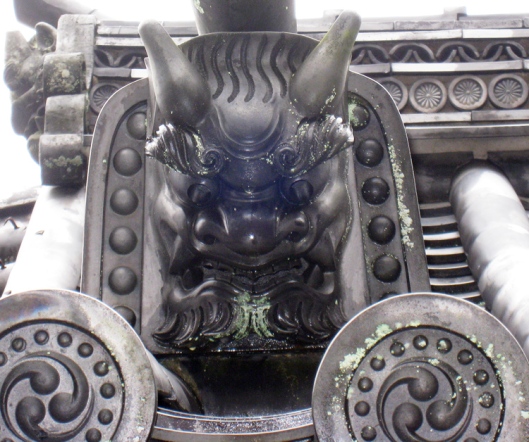
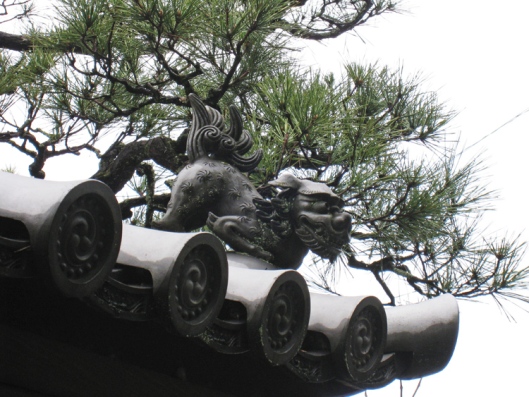
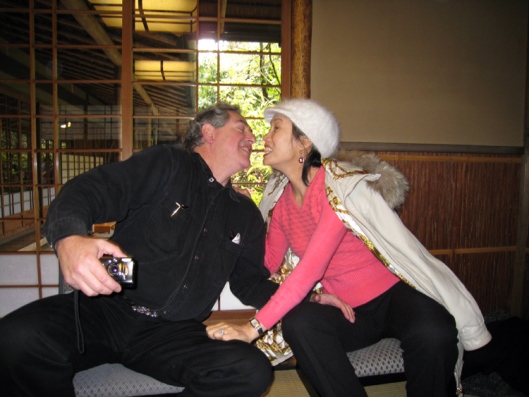
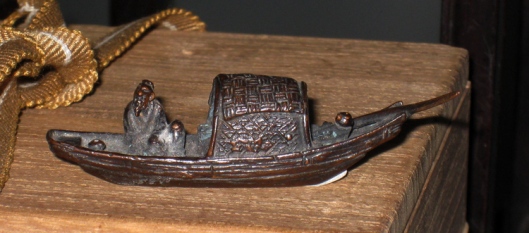
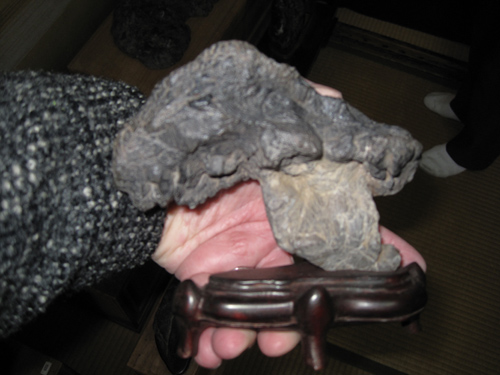
That Black Pine stone is awesome!
Some nice shots of the temples in Kyoto Sam. One of these days I’ll head over there to see the sights.
Very smart to have Rongsheng do the bargaining!
She is the master!